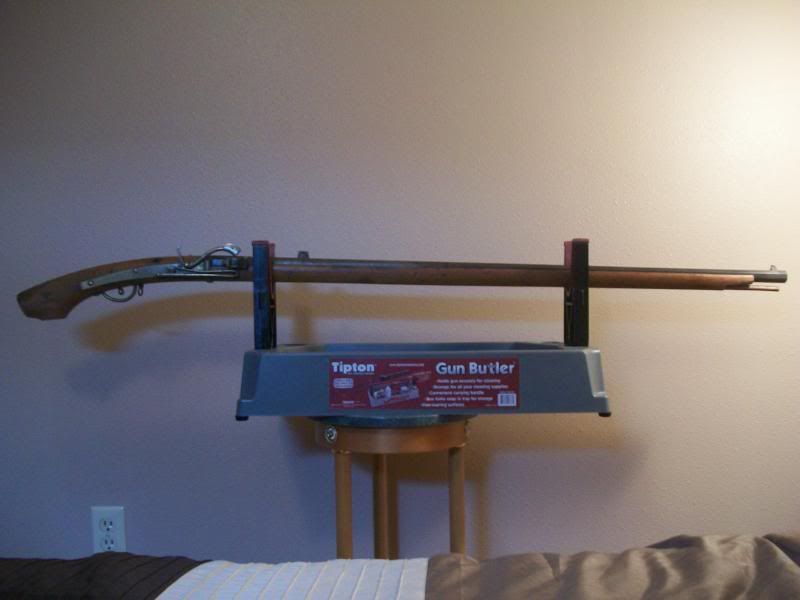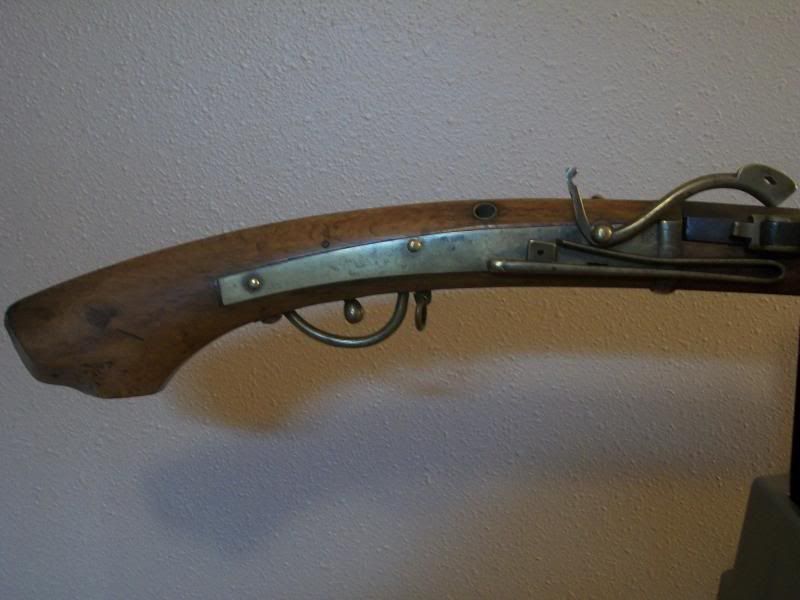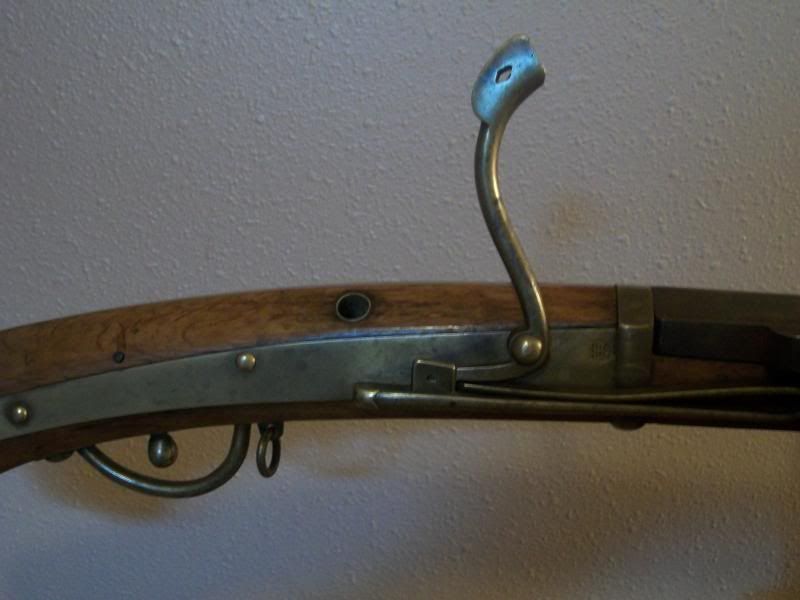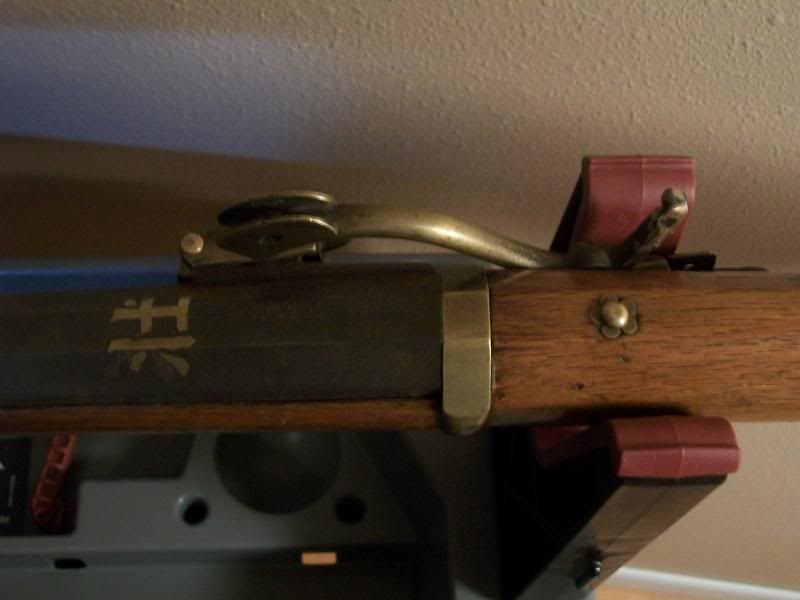Thanks for the replies fellas. The musket is actually quite a plain one, with the only embellishment being the inlaid character on the top of the barrel.....it is the Chinese character for 'Strong' & is also stamped onto the bottom of the flashpan cover, & towards the front of the lockplate just ahead of the serpentine. The underside of the barrel is covered with extensive stamped/engraved characters, detailing the specifics of the musket. I sent the a rubbing of the markings to the Asian language Department of the University of Washington some years ago, without mentioning what or where they were from & I got a fairly detailed reply from the department head. I knew the characters were Chinese, not Japanese, so approached it from that angle, but the professor actually asked if the item were not in fact Japanese in origin as some of the names & other word useage pointed to that.
To answer your questions as best I can;
Yes, the tail does contact the sear, though it was quite worn when I first got it, I fixed it by building up the brass on the rear side of the serpentine in that area, as can be seen in the last photo.
The external (brass/bronze) mainspring is what powers the serpentine, but it is quite weak.
The serpentine actually places the match a little too far forward of the flashpan for reliable ignition, it seems. I am tempted to try & bend the tail of the serpentine to reposition it about halfway, or better, between its current location & those on the two muskets shown earlier in this thread, to get a shorter throw & faster lock time, & also bend the clamp end a tad to get it more central to the pan. Would you suggest this, & if so how would you tackle it? Bend cold or with heat?
I have looked at pictures of a many other matchlock muskets, from different regions of Japan, & none seem to have such long serpentine travel.









